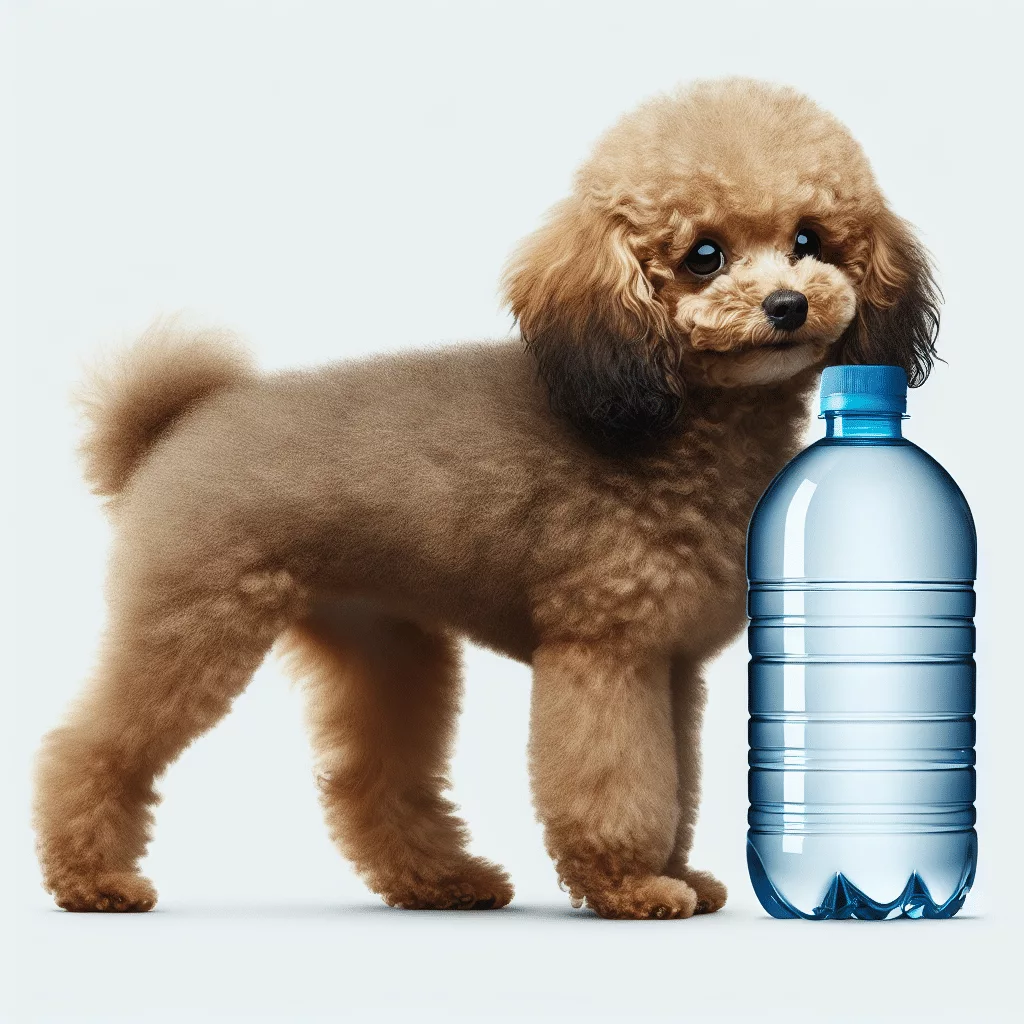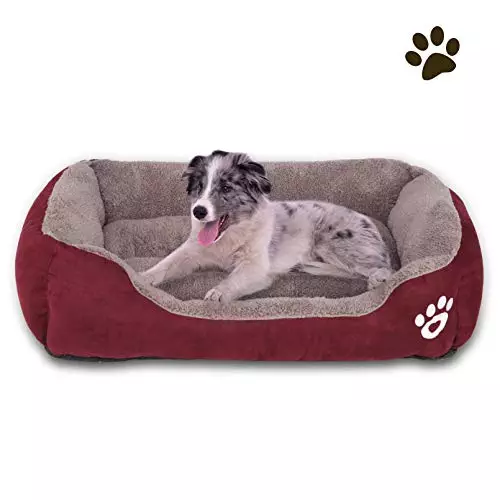Picture this – you’re in the market for a new pet and a Toy Poodle has captured your interest. You’re curious about how big a Toy Poodle grows because you live in an apartment with certain size restrictions for pets. This concise guide will serve as your one-stop-shop to satisfy your curiosity about how big a Toy Poodle gets, serving up all the vital size related information, from the growth stages to the distinctive features which make this breed a perfect fit for certain lifestyles.

Identifying a Toy Poodle
Before delving into the details of a toy poodle’s size and growth, it is crucial to first understand what a toy poodle is and how to identify one.
What is a Toy Poodle
The toy poodle is the smallest variety of the poodle breed. But don’t let the size fool you, these pint-sized creatures pack a big personality. Known for their intelligence and friendly nature, toy poodles make excellent pets for both families and individuals. Despite being small, they are active and agile, and carry the same zest for life as their larger counterparts.
Distinguishing features of a Toy Poodle
Toy poodles share many common traits with the standard and miniature poodles, including a curly or corded coat, long floppy ears, and a distinctive, prance-like walk. They also have the same intelligent, alert expression. However, the primary distinguishing feature of a toy poodle is its size. The American Kennel Club (AKC) states that toy poodles should not exceed 10 inches in height.
Difference between a Toy Poodle and other Poodle types
Apart from the size, there is no significant difference between a toy poodle and other types of poodles. They possess the same physical features and personality traits. Toy poodles are simply a scaled-down version of standard and miniature poodles.
General Overview of a Toy Poodle’s Size
So how big does a toy poodle get? Let’s take a look at what can be expected in terms of the size of a full-grown toy poodle.
Typical weight range of a Toy Poodle
Toy poodles typically weigh between 4 to 6 pounds, making them quite light and easy to handle even for children and the elderly.
Typical height range of a Toy Poodle
As for height, toy poodles stand about 10 inches tall at the shoulder on average. Nevertheless, individual sizes can vary slightly, with some being smaller or slightly taller.
Size comparison to common household items
To help with visualization, a typical toy poodle would be about the same height as 2 stacked tissue boxes and weigh approximately as much as six cans of soup.
Health Factors Affecting a Toy Poodle’s Size
A toy poodle’s size can be influenced by multiple factors, including genetics, diet, and exercise.
Influence of genetics on a Toy Poodle’s size
The parents’ sizes primarily determine a toy poodle’s size. If both parents are small, chances are the puppies will also be small.
Impact of diet and nutrition
Feeding your toy poodle a balanced diet during its growth stages can significantly impact its ultimate size. A dog that is not adequately nourished during this time may not reach its full genetic size potential.
Role of physical activity and exercise
Like all dogs, toy poodles need plenty of physical activity. Regular exercise can help ensure that your poodle stays fit and healthy and grows to its appropriate size. However, over-exercising at a young age can hinder growth, so it’s a good idea to consult with your vet to determine an appropriate exercise routine.
Size of a Toy Poodle at Birth
Just as humans, toy poodles start small and grow over time. Here’s a glance at their size at birth and during the first few weeks.
Average birth weight of a Toy Poodle
At birth, a toy poodle puppy weighs approximately 2.5 to 3 ounces. This can vary slightly, but typically they are quite tiny.
Average birth height of a Toy Poodle
In terms of height, a newborn toy poodle is usually under 3 inches tall, but this can be hard to measure accurately because of their curled-up position.
Rate of growth in the first few weeks
During the first few weeks of life, toy poodles experience rapid growth. By the eighth week, they can weigh anywhere from 2 to 4 pounds.
Toy Poodle’s Growth Stages
As the puppies mature, their growth rate slows down. Let’s discuss the growth stages of a toy poodle.
Growth spurts in Toy Poodles
Toy Poodles typically experience several growth spurts in their first year of life. This period is usually marked by increases in both weight and height.
Expected size at different stages of growth
By six months, a toy poodle will be close to its full height and will weigh around 50-75% of its expected adult weight. By 12 months, most toy poodles would have reached their adult size.
What age does a Toy Poodle stop growing
On average, toy poodles complete their growth by 6 to 9 months of age, although some may continue to fill out until they reach about one year.
Variations in Size Among Individual Toy Poodles
Not all toy poodles are created equal. Some tend to be on the smaller side, whereas others might be slightly larger.
Range of size variation among Toy Poodles
There is a slight range in terms of both weight and height among toy poodles. Some may be slightly taller than 10 inches, while others might be below this standard.
Factors contributing to size variation
Genetics, nutrition, and care all play crucial roles in influencing a toy poodle’s size. Dogs from larger parents may end up being on the higher end of the size spectrum and vice versa.
How different is the smallest from the largest Toy Poodle
On average, the smallest toy poodle may be around 8 inches in height, while the tallest may reach up to 12 inches. Weight can vary from around 3 pounds for the smallest members of the breed, up to 8 pounds for the largest.
How to Measure Your Toy Poodle
Measuring your toy poodle can be critical in monitoring its health and ensuring it’s developing correctly.
Measuring the height of a Toy Poodle
To measure the height of your toy poodle, start from the base of its paw up to its shoulder. Always make sure your poodle is standing on a flat surface when taking this measurement.
Measuring the weight of a Toy Poodle
Weighing your toy poodle can be done quite easily with the help of a regular home scale. Hold your toy poodle while standing on the scale, note down the weight, then weigh just yourself and subtract it from the initial measurement.
Tools and techniques for accurate measurement
For height, a regular measure tape will suffice. However, be sure to keep your dog calm while taking the measurement. For weight, a digital scale may give you a more accurate reading. Always weigh your poodle at around the same time of day to prevent fluctuation in readings.
Maintaining a Healthy Size for Your Toy Poodle
Ensuring that your toy poodle maintains a healthy size throughout its life involves a balanced diet, regular exercise, and frequent vet check-ups.
Balanced diet requirements
Feeding your toy poodle, a balanced diet packed with essential nutrients can help ensure it stays healthy and maintains a proper size. Avoid overfeeding as this can lead to obesity.
Recommended exercise for a Toy Poodle
Toy poodles are active dogs, regardless of their size. They require daily exercise to maintain their health and avoid weight gain. Remember to consult with your vet to determine an appropriate exercise routine.
Vet check-ups and size monitoring
Regular vet visits are important in monitoring your toy poodle’s size. Your vet will be able to tell if your poodle is following the expected growth chart, and can provide advice if it’s underweight, overweight, or growing too quickly.
Risks of Obesity in Toy Poodles
Because they’re small, it’s sometimes easy to overfeed toy poodles and because of their splendid personalities, it’s even easier to spoil them with treats. But obesity poses a serious threat to toy poodles.
Health issues linked with obesity
Obesity can lead to several health issues in toy poodles such as hip dysplasia, diabetes, heart disease, and a lower life expectancy. It’s very important for owners to ensure their poodle maintains a healthy weight.
How to detect if your Toy Poodle is overweight
If you can’t feel your toy poodle’s ribs or see its waist, it may be overweight. Another sign may be lethargy or difficulty in moving around. Always consult with a vet in case of concerns.
Steps to take if your Toy Poodle is overweight
If your toy poodle is overweight, consult with your vet to create a food plan and an exercise routine. Portion control and moderate physical activity are generally effective in managing a dog’s weight.
Common Myths about Toy Poodle’s Size
The world of dog size and breed can be filled with misconceptions and misunderstandings. This is particularly true with toy poodles, given their distinct size.
Misconceptions about the Toy Poodle’s size
One common misconception is that toy poodles are not as active as their larger counterparts. However, as long as they are healthy, toy poodles are just as lively and agile.
Another myth is that toy poodles are ‘miniature’ dogs. This is incorrect – toy poodles are small yes, but they are not miniature or teacup dogs. They have their own breed standards set up by Kennel Clubs all over the world.
Facts about the Toy Poodle’s size
Fact is, toy poodles are the smallest of the poodle breeds, standing at no more than 10 inches, but they’re every bit as intelligent, friendly, and agile as the standard or miniature poodles. So, don’t underestimate them due to their petite stature! They might just outsmart you!





